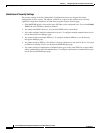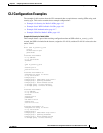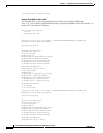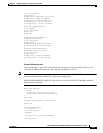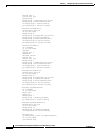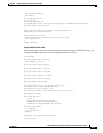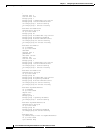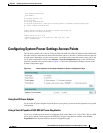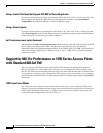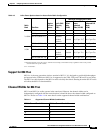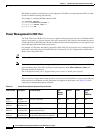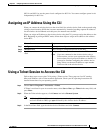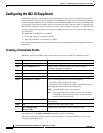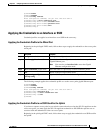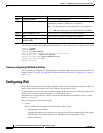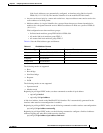
4-22
Cisco IOS Software Configuration Guide for Cisco Aironet Access Points
OL-30644-01
Chapter 4 Configuring the Access Point for the First Time
Support for 802.11n Performance on 1250 Series Access Points with Standard 802.3af PoE
Using a Switch That Does Not Support IEEE 802.3af Power Negotiation
If you use a switch to provide Power over Ethernet (PoE) to the 1040, 1130, or 1140 access point, and
the switch does not support the IEEE 802.3af power negotiation standard, select Pre-Standard
Compatibility on the System Software: System Configuration page.
Using a Power Injector
If you use a power injector to provide power to the 1040, 1130, 1140, 1240, 1250, or 1260 access point,
select Power Injector on the System Software: System Configuration page and enter the MAC address
of the switch port to which the access point is connected.
dot11 extension power native Command
When enabled, the dot11 extension power native shifts the power tables the radio uses from the IEEE
802.11 tables to the native power tables. The radio derives the values for this table from the
NativePowerTable and NativePowerSupportedTable of the CISCO-DOT11-1F-MIB. The Native Power
tables were designed specifically to configure powers as low as -1dBm for Cisco Aironet radios that
support these levels.
Support for 802.11n Performance on 1250 Series Access Points
with Standard 802.3af PoE
The Cisco Aironet 1250 Series access points requires 20W of power for optimum performance of
802.11n on both the 2.4- and 5-GHz bands. This allows you to configure one radio to operate using
802.3af. This allows full functionality under 802.3af on one radio while the other radio is disabled. Once
you upgrade to a powering solution that provides 20W of power to the access point, you can configure
the second radio so that both radios are fully functional with 2x3 multiple input multiple output (MIMO)
technology.
1250 Series Power Modes
The 1250 series access point can be powered by either inline power or by an optional AC/DC power
adapter. Certain radio configurations may require more power than can be provided by the inline power
source. When insufficient inline power is available, you can select several options (based upon your
access point radio configuration) as shown in Table 4-3.



